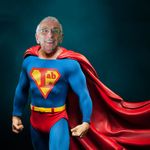Large Format Litho Negative
Copy link to clipboard
Copied
Hello
In the family archives of Adele I found this folder with negatives.
I need to scan these negatives for preservation and then to print out the results on photographic paper. I used to scan 35mm negatives using the supplied film holder.
Is it possible to scan these 6x9 inch negatives? I have a Epson 3170 Photo scanner.
Thanks
Explore related tutorials & articles
Copy link to clipboard
Copied
Should be possible, though you may need a fitting 6x9 holder (e.g. this one):
» https://www.photo.net/discuss/threads/scanning-6x9-negatives-with-epson-3170.332379/
» https://files.support.epson.com/pdf/pr317p/pr317ppg.pdf (Page 5, under "Scanning Film and Transparencies")
Is this related to Photoshop at all, though? Maybe a dedicated photography forum could be a better fit!
Copy link to clipboard
Copied
Should be possible, though you may need a fitting 6x9 holder (e.g. this one):
The Epson 3170 can scan film up to 6 x 9 cm.
These negatives are 6 x 9 inches, and would require a scanner than can scan 8 x 10" film, like for instance the 4990, V700/750 or V800/850.
Copy link to clipboard
Copied
Argh... you're right. I misread it somehow. My apologies!
Copy link to clipboard
Copied
If you have access to a light table and a good macro lens, photographing it will probably give a better result than scanning.
Copy link to clipboard
Copied
A look, first at a sample print made from a negative not included in your post, and then a view of the film samples indicates you have composite (line and halftone) negatives. If the fidelity of those files is to be maintained, your best option is to avoid a lens altogether.
Purchase ortho litho film and chemistry. A Google browse should turn up a source for film and chemistry supplies.
Buy or make a simple contact frame.
Remove the films from the goldenrod paper and give them a thorough cleaning.
Under red safelight contact an existing film to the unexposed film emulsion-to-emulsion. That will produce a film positive.
Repeat the process using the dried positive, again emulsion-to-emulsion. Since, the starting images are composites, the halftones consist of what are called hard dots (I would guess 133 or 150/lpi) and an exact duplicate is not difficult to make.
Get ready! An upgraded Adobe Community experience is coming in January.
Learn more








